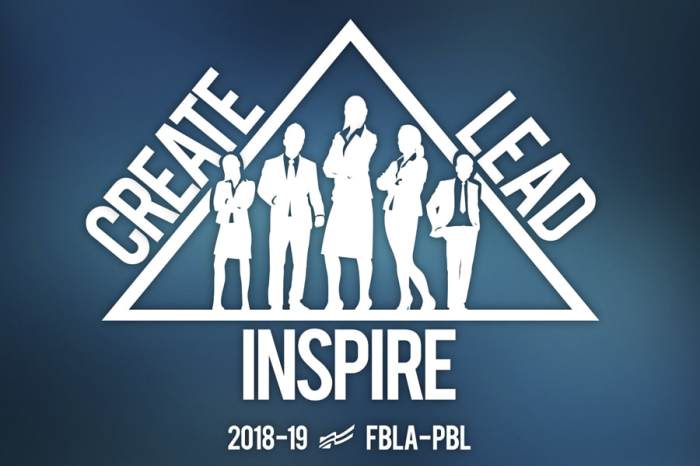Intro to business procedures fbla – Intro to Business Procedures for FBLA provides a comprehensive overview of the fundamental concepts, types, and best practices for creating, implementing, and managing business procedures within the Future Business Leaders of America (FBLA) framework.
This guide delves into the importance of establishing and following standardized procedures, explores various types of procedures used in different industries, and discusses the benefits of streamlined and efficient business operations.
1. Overview of Business Procedures
Business procedures are a set of established guidelines and instructions that define the specific steps and actions required to complete a particular task or process within an organization. They provide a clear roadmap for employees to follow, ensuring consistency, efficiency, and compliance.
Adhering to established procedures is crucial for smooth business operations. They help streamline tasks, minimize errors, improve communication, and maintain regulatory compliance. By standardizing processes, businesses can reduce inefficiencies, improve decision-making, and enhance overall performance.
2. Types of Business Procedures
There are various types of business procedures, each designed to address specific aspects of business operations:
Operational Procedures, Intro to business procedures fbla
- Define the day-to-day tasks and activities involved in core business functions, such as production, customer service, and sales.
- Example: A procedure for processing customer orders.
Administrative Procedures
- Govern the non-operational aspects of a business, such as human resources, finance, and legal compliance.
- Example: A procedure for employee onboarding.
Financial Procedures
- Artikel the processes related to financial management, including budgeting, accounting, and financial reporting.
- Example: A procedure for accounts payable processing.
3. Creating and Implementing Business Procedures

Effective business procedures are created through a systematic process:
- Identify the Need:Determine the specific task or process that requires a procedure.
- Define the Scope:Artikel the boundaries and purpose of the procedure.
- Gather Input:Consult with stakeholders and subject matter experts to gather their insights and knowledge.
- Develop the Procedure:Create a clear and concise set of steps and instructions.
- Document the Procedure:Formalize the procedure in a written or digital format.
- Implement the Procedure:Communicate the procedure to employees and provide training.
- Monitor and Evaluate:Regularly assess the effectiveness of the procedure and make adjustments as needed.
4. Benefits of Streamlined Business Procedures

Streamlined business procedures bring numerous benefits to organizations:
- Improved Efficiency:Clear and standardized procedures reduce confusion and eliminate bottlenecks.
- Reduced Errors:Consistent procedures minimize mistakes and improve accuracy.
- Enhanced Compliance:Procedures help ensure compliance with legal and regulatory requirements.
- Increased Productivity:Employees can focus on value-added tasks rather than mundane processes.
- Improved Communication:Procedures facilitate clear and consistent communication among team members.
Example: A manufacturing company implemented a streamlined procedure for inventory management, resulting in a 15% reduction in inventory waste and a 10% increase in customer satisfaction due to improved product availability.
5. Tools for Managing Business Procedures: Intro To Business Procedures Fbla
Software and tools can assist in managing and automating business procedures:
- Process Management Software:Enables organizations to create, manage, and track business procedures.
- Workflow Automation Tools:Automate repetitive tasks and streamline workflows.
- Document Management Systems:Centralize and manage business procedures in a digital format.
- Collaboration Platforms:Facilitate communication and collaboration among stakeholders involved in procedure development and implementation.
6. Compliance and Legal Considerations
Business procedures must comply with legal and regulatory requirements:
- Legal Compliance:Procedures must adhere to laws and regulations governing business operations.
- Industry Standards:Procedures should align with industry best practices and standards.
- Ethical Considerations:Procedures should be ethical and respect the rights of employees and customers.
Non-compliance can result in penalties, reputational damage, and legal liability.
7. Continuous Improvement and Best Practices
Continuous improvement is essential for effective business procedures:
- Regular Review:Regularly evaluate procedures to identify areas for improvement.
- Employee Feedback:Seek feedback from employees who use the procedures.
- Best Practices:Adopt industry-leading best practices to enhance procedures.
By embracing continuous improvement, organizations can optimize their business procedures and maximize their benefits.
Question & Answer Hub
What are the key benefits of following established business procedures?
Established business procedures provide consistency, efficiency, reduced errors, improved communication, and enhanced compliance.
What are some common types of business procedures?
Common types include operational procedures (e.g., production processes), administrative procedures (e.g., employee onboarding), and financial procedures (e.g., accounts payable).
How can businesses ensure compliance with legal and regulatory requirements?
Businesses can ensure compliance by reviewing relevant laws and regulations, implementing appropriate procedures, and conducting regular audits to monitor adherence.